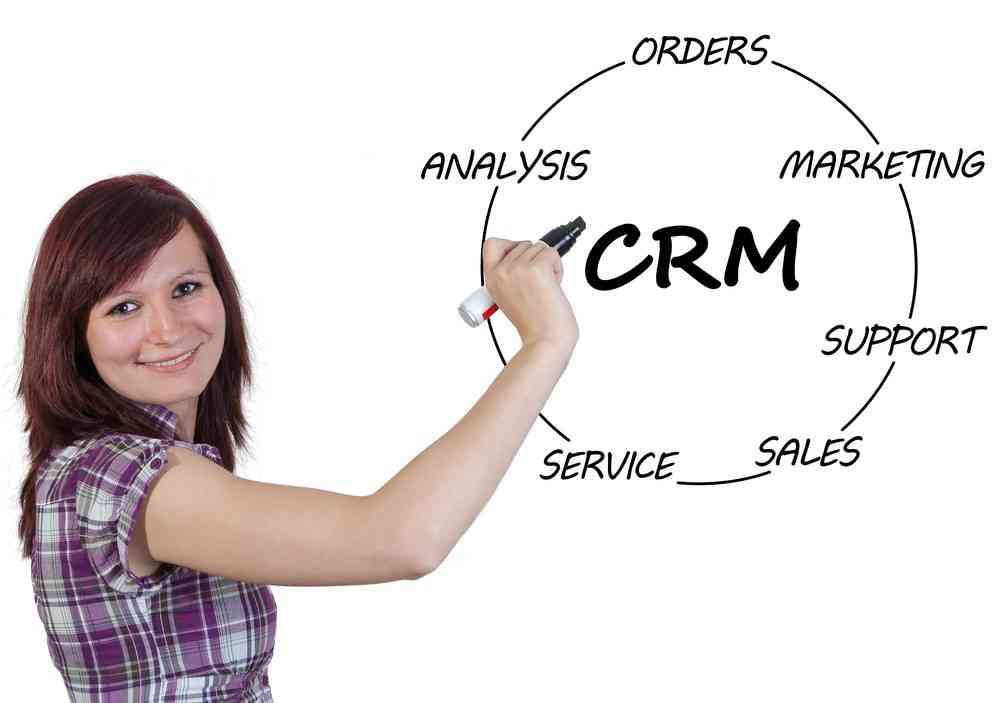Why You Should Really Be Using CRM Analytics

Implementing a Customer Relationship Management System (CRM) involves a significant investment of time and money. CRM is the ideal starting point for analytics because it collects the data that leads to highlighting the aggregate picture of organizational strength and weaknesses. Analytics digs deeper into the data mine to give managers insight into customer behavior that can help improve the client experience.
Although many owners and managers quickly recognize and correct the most glaring mistakes, they often miss the mark of maximizing benefits. These managers fail to mine and analyze data effectively. The result is an improvement in some areas, but other more complicated problems go unnoticed ignoring the untapped potential.
Integrating a comprehensive analytics program to CRM software will help managers understand customers and processes more thoroughly so they can develop new strategies to exploit the data and significantly add to the bottom line. The most advanced versions of analytics provide managers the ability to improve quality in various critical areas of their business and doing so with increased profit as a priority. Analytics allows for an unparalleled opportunity to monitor and enhance a variety of metrics, leading to improved levels of operational efficiency, employee performance, and customer satisfaction.
The company mines and analyzes data that includes every interaction affecting the company. Analysts study customer behaviors like age, gender, buying patterns, customer profile, and favorite products. The studies allow managers to isolate patterns and trends to create customer experiences for identified groups. The isolation tends to maximize satisfaction levels of customer engagement which in turn increases profits.

Essential Characteristics of Effective CRM Analytics
Analytics tools serve businesses in the same way that a brain informs the body. Active CRM analytics collect, store, and analyze organizational data and then guide analysts step by step through the process of pulling, organizing, and studying the desired information. The result of the analytical process adds the following attributes to the organization’s arsenal of improving customer experience and growing profits. Decision-makers and planners will gain the advantages of:
- Knowing and understanding current customer behavior and emerging trends
- The ability to effectively monitor staff performance and organizational processes and determining what to keep or enhance and what to discard
- Predict future behavior gaining the capacity to aim at the right targets including understanding where to invest to maximize impact
- Create baseline company performance standards for better improvement planning and measuring
![]()
Tracking the Metrics that Make a Difference
Before an efficient monitoring process is created the first step is identifying what key performance indicators (KPIs) are critical to the company’s success. The right metrics provide valuable information that leads to improvement but when planners choose wrong they waste time and money. Michael Rutledge, a Product Manager at American Express, asks; “…with all this data how can we use it all – companies sometimes run in circles over and over again because they can’t get clarity and agreement on what metrics matter.” McClosky, H. (Oct. 2016).
The metrics that matter most are those tied to a company’s strategy. How the plan gets executed must point the way to what gets measured. For example, if a company is growing in-store sales but losing online customers one important metric to measure is the success of getting products to clients promptly.
Use aggregate data to determine your strategy and pick metrics based on the goals of the plan. Keep in mind that making adjustments as is not only acceptable but recommended as measurements highlight positive or negative results. Pick the starting point that seems best based on the available data. Some metrics are relatively obvious. When introducing new products to the market, for example, CRM sales analytics are going to track the number of sales, where the highest number occurs, and how each demographic is performing within the total number.

CRM Analytics is also Effective for Small Businesses
Owners and managers of small and medium-sized businesses (SMEs) often feel locked outside of CRM analytics for three reasons; cost, risk, and time. The SME owners and managers seek growth for their businesses just like their larger contemporaries. They should know that although earlier versions of CRM were quite often expensive and unwieldy to work with, newer software is affordable and user-friendly. Software manufacturers have made the decision to build in the step-by-step guidance that teaches users how to collect, mine, and analyze data.
Initial setup costs for software, hardware, and training are well within the budgets of even the smallest business. As CRM, and accompanying analytics has become increasingly sophisticated the return on investment often pays for the initial investment very quickly as the firm grows. Analytics helps SMEs in the same way it helps larger organizations by assisting in all the same areas including customer relationships, company processes, tracking results and how it all relates to strategy.

Kalyan Banga226 Posts
I am Kalyan Banga, a Post Graduate in Business Analytics from Indian Institute of Management (IIM) Calcutta, a premier management institute, ranked best B-School in Asia in FT Masters management global rankings. I have spent 14 years in field of Research & Analytics.







1 Comment
3 Ways to Improve Your Use of CRM Technology - Fusion Analytics World
August 25, 2017 at 1:25 am[…] best practice standard for strengthening customer loyalty today. Most commonly, marketers rely on CRM software to streamline the many tasks required to market, measure and improve upon customer retention […]